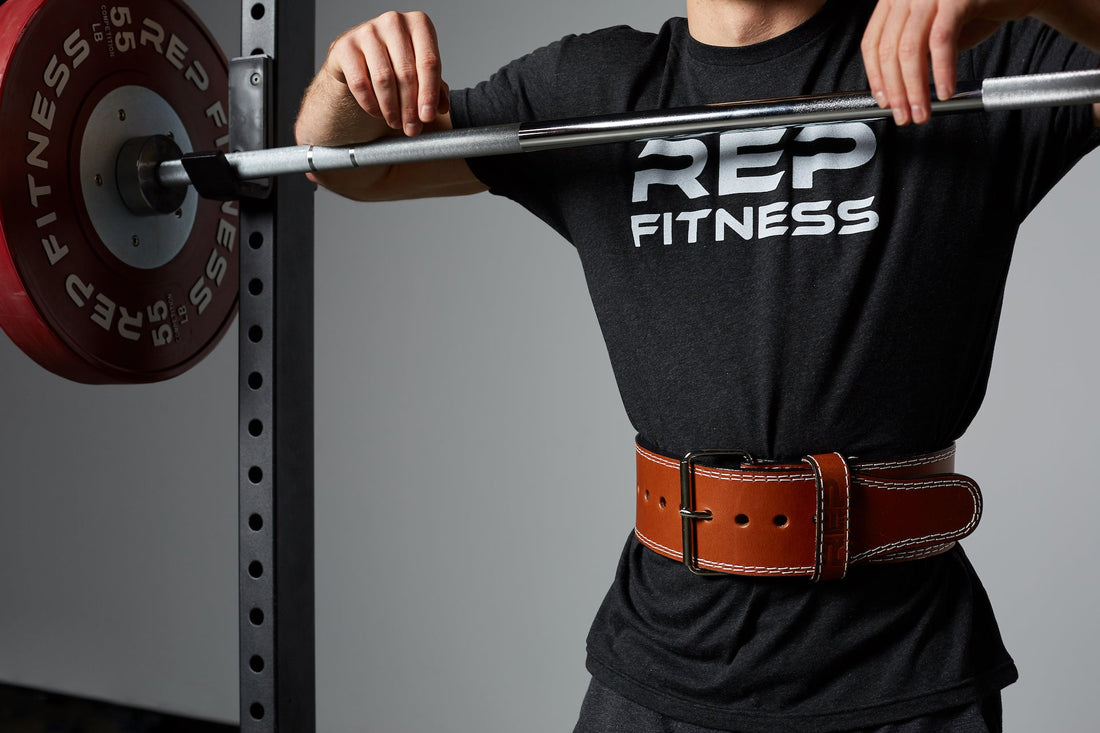
Material matters. Leather and nylon lifting belts are both popular among gym-goers, but the different materials have different pros, cons, and purposes.
Here’s a look at the differences between leather belts and nylon belts to find the style that suits your needs best.
Why Do I Need a Lifting Belt?
No matter the material, a lifting belt adds stability to your lifts. A lifting belt acts as a tool to increase intra-abdominal pressure by giving your core muscles something to brace against as the abdominal wall expands. This added stability is why most athletes can lift more with a belt than without.
What is the Best Leather Lifting Belt?
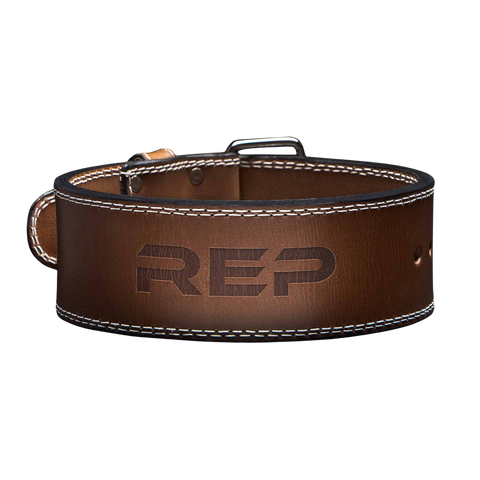
Sturdy, reliable, and built for heavy-duty lifting. That's a leather lifting belt for you. These belts offer the most support, especially during max lifts. You’ll find different widths, thicknesses, and fasteners (primarily prongs and levers).
Leather lifting belts are most common among powerlifters, but some Olympic weightlifters prefer leather too, often for the tapered fit.
The REP USA Premium Leather Lifting Belt is handmade in the USA using the highest quality, full-grain, vegetable-tanned leather from American cattle. This type of leather is known for its durability, strength, natural beauty, and unique patina. The belt features a single-prong, stainless-steel buckle with a seamless roller for quick and easy adjustments. The rivets are nickel-plated brass. The belt's slightly roughed interior lining provides some "stick," so it stays in place and doesn't slide around.
All three logos -- two REP logos and one mountain logo -- are debossed for a textured, high-end look and feel. The belt's specifications comply with USAPL and IPF competition standards, so you can use it for sanctioned powerlifting meets.
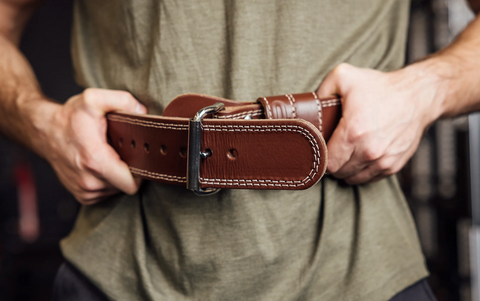
REP also offers a classic Leather Lifting Belt and a Leather Olympic Lifting Belt. The former is a v
ersatile powerlifting belt ideal for strength athletes, beginners, and home gym owners looking for a reliable, budget-friendly option to enhance support during lifts. The latter, as you'd expect from the name, is specifically designed for Olympic lifting, featuring a taper from a 4” width at the back to a 2.5” width at the front. This design provides strong support while maintaining a slim profile to minimize interference with Olympic lifts.
Crafted from authentic leather, these belts offer superior comfort, support, and longevity. They also boast a polished leather interior. The belt includes a single-prong, steel buckle equipped with a seamless roller for effortless and rapid adjustments. Additionally, a buckle guard—an additional strip of leather positioned behind the buckle—protects against clothing snags.
What Are the Benefits of Nylon Belts?
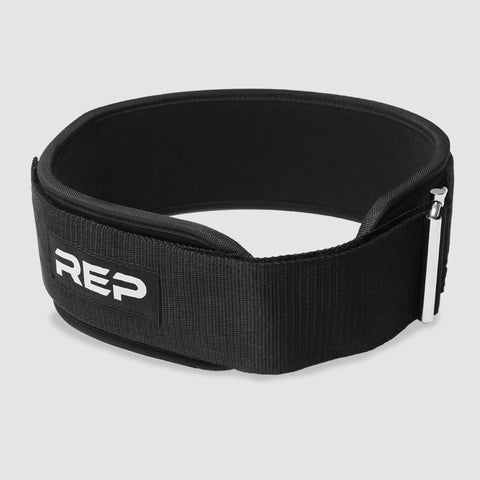
Now, let's talk about nylon, the jack-of-all-trades in the lifting world. While they may not offer the same level of support as leather, nylon belts shine with their versatility. Whether you're into functional fitness, Olympic weightlifting, or just starting out your lifting journey, these guys are your best friend. Nylon belts can be tapered or straight and have different fasteners.
Whereas leather belts favor 1RM lifts, nylon gym belts are perfect for dynamic movements, like snatches and cleans.
REP’s Nylon Lifting Belt is 4” thick in the back with a 3" strap in the front (in compliance with International Weightlifting Federation specs) for consistent pressure to provide optimal stability during your lifts. Secure the belt with a strong hook-and-loop fastener for the perfect belt tightness without getting stuck between hole sizes.
A knurled, steel locking mechanism adds stability to the buckle, prolongs the life of the hook-and-loop fastener, and along with a pull tab, allows for quick and easy adjustments to loosen or tighten the belt for different types of lifts. This can save you adjustment time in workouts and competitions that require you to move between heavy and light or bodyweight exercises.
This belt is made from a sturdy nylon, which is excellent for both performance and comfort.
So, which lifting belt is right for you?
It all comes down to your goals and preferences. If you're all about heavy compound lifts or plan to compete in a powerlifting meet, leather might be your best bet. But if you're looking for a versatile belt that can handle a variety of exercises, nylon's got your back (er, core).
Remember, the most important thing is to lift safely, no matter which belt you choose.
What Are the Differences Between Leather and Nylon Lifting Belts?
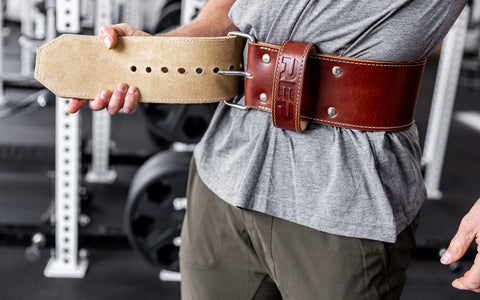
Leather and nylon are more than just materials; they have different strengths and purposes. Here’s a look at some of the differences between leather and nylon lifting belts.
Price
Leather belts are like the luxury option in the lifting world. They're top tier, often with metal fasteners, and that typically comes with a heftier price tag.
Comfort
Straight out of the box (or the gym bag), nylon belts are comfortable. They're easy to adjust mid-workout, too. Leather belts might take a bit of breaking in until they’re comfy to lift in, especially the thicker ones.
Mobility
When it's time to bust out dynamic moves like snatches or kettlebell swings, nylon belts are your MVPs. They move with you, giving you the freedom to nail those exercises without feeling restricted. Leather belts, on the other hand, can be a bit stiff, which might cramp your style during more fluid movements.
If you want leather with a little more mobility, look for a leather belt with a tapered fit; those can provide the support of leather without sacrificing your range of motion.
Support
When it comes to heavy lifting, leather belts take the crown. That’s why they're a standard for powerlifters and commonly seen in competitions.
Some Olympic lifters prefer leather for the extra support, too.
Closures
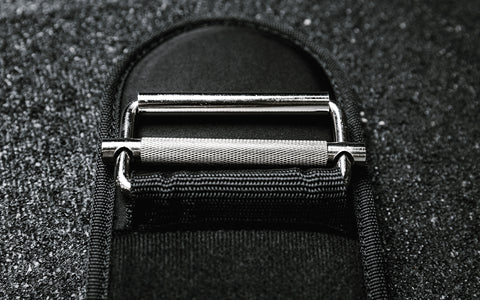
Leather belts feature a classic prong or lever fastener, while nylon belts go for the hook-and-loop closure or hook and loop with a ratchet. If you like a snug fit, the prong or lever is for you. But if you prioritize flexibility, a hook-and-loop fastener gives security without cramping your style.
Versatility
Nylon belts are the Swiss Army knives of lifting gear; they're easy to adjust to different snugness levels (depending on what you're doing) and can handle a variety of movements, from compound exercises to dynamic, full-body workouts.
Competition-Approved Weightlifting vs. Powerlifting Belts
Let's break down the differences between weightlifting and powerlifting belts for competitive lifters.
Powerlifting Belts
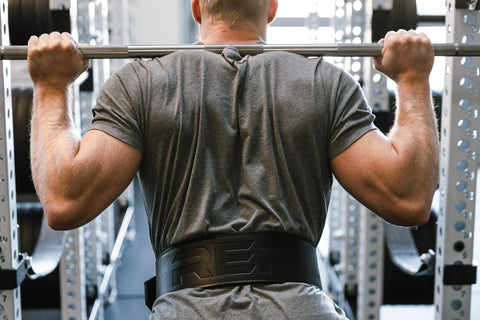
If you want to compete in a powerlifting meet, your belt needs to meet the specifications of the International Powerlifting Federation (IPF) or the association you are competing in (different federations may have different requirements, so make sure you check with the event promoter or your coach).
Here's what the IPF requires:
Max width: 10cm (4”)
Max thickness: 13mm (along the main width)
Buckle size: Inside 11cm, outside 13cm
Buckle type: 1-2 prongs or lever (quick release)
Tongue loop width: Max 5cm
Distance between buckle and loop end: Up to 25cm
Materials: Leather, vinyl, or similar non-stretch material (no additional padding or support)
In addition, the IPF requires belts from manufacturers on its approved equipment list. However, not all associations require that.
Olympic Weightlifting Belts
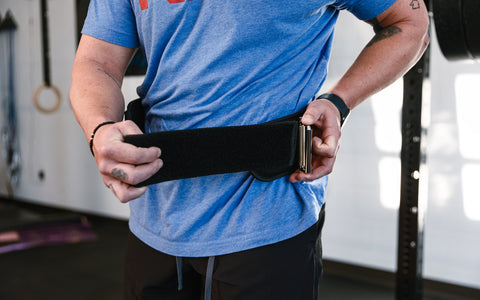
If you want to compete in the International Weightlifting Federation (IWF), here are the belt requirements (there aren’t as many listed in the rulebook):
Maxi width: 12cm (4.75”)
Belt placement: Outside your singlet
What Belt is Best for General Lifters?
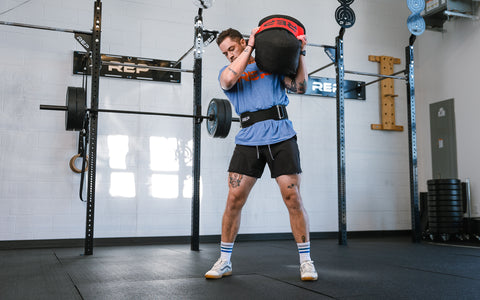
You don’t have to compete to wear a gym belt. A lot of recreational lifters like to wear a belt for bracing cues. If you’re new to lifting, this is your first belt, you don’t plan on lifting super heavy, and/or you aren’t sure which material is best, try nylon. That way you’ll still get the support, but they’re less expensive, easier to use/adjust, and more comfortable.
If you compete in both weightlifting and powerlifting, you may want to get both types of belt: a leather one for heavy lifts and a nylon one for dynamic movements.
Pros and Cons of Different Kinds of Lifting Belts
Here's a look at the pros and cons of the different kinds of belts.
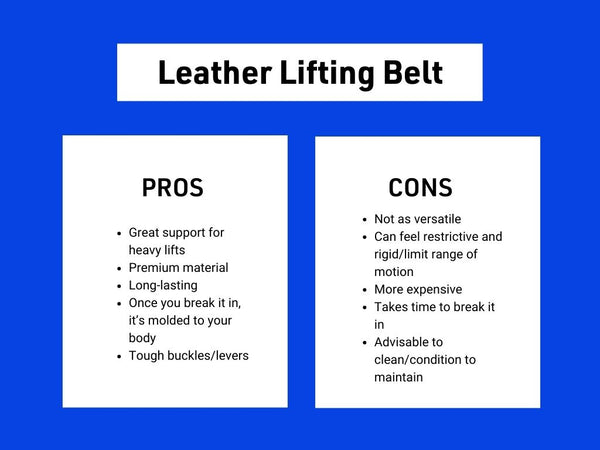
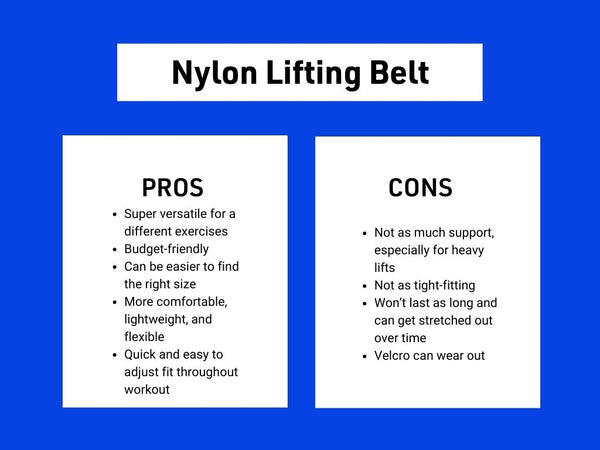

NEWSLETTER SIGNUP
Product launch information, promotions, blogs, and REP news.







